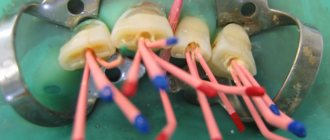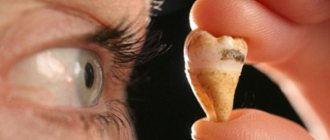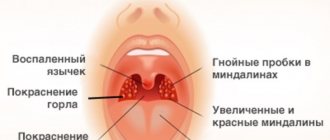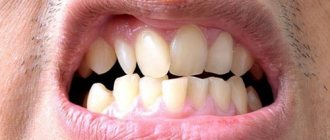Probably every person has heard such a phrase as “guta-perchia boy,” but not everyone understands the reason for its occurrence. This has been the name since ancient times for people who have congenital hypermobility of the joints.
Despite their plasticity and flexibility, this condition is considered by specialists as a connective tissue pathology.
It is worth noting that, despite the fact that scientists from around the world have been studying Ehlers-Danlos syndrome for many years, they have still not been able to invent a medicine that can overcome this disease.
But, if patients are provided with proper care by their loved ones, the consequences of the pathological condition will become less noticeable.
From a scientific point of view
What is the meaning of the word "gutta-percha"? From a scientific point of view, this material was classified in 1843 and classified as a useful natural thermoplastic. In the second half of the 19th century, gutta percha was used for a variety of domestic and industrial purposes.
In particular, this material was needed as an insulating substance for submarine telegraph cables. Long before gutta percha was introduced into the Western world, it was used in a less processed form by the natives of the Malaysian archipelago to make knife handles, walking canes and other purposes.
The first European to discover this material was John Tradescant, who discovered it in the Far East in 1656. He called it "Mather's forest." Dr. William Montgomery, a medical officer in the Indian Service, introduced gutta-percha into practical use in the West. He was the first to recognize the potential of this material in medicine, and in 1843 he was awarded the gold medal of the Royal Society of Arts in London.
Causes and symptoms
The most common sign of this pathology is pain in the joints, which is strongly felt after any physical activity, for example, after playing sports.
As a rule, pain occurs both simultaneously in symmetrically located joints and in one place.
Due to the fact that the disease manifests itself after exerting stress on the joint and muscle tissues, the intensity of the pain increases in the evening.
Children may experience severe discomfort in the knees and spinal column during the night, which is why their sleep is constantly disturbed.
After waking up in the morning, such patients usually do not have problems with mobility, and they spend the first half of the day very actively and intensely.
Gutta-percha tree
In Malaysia, the tree is known as "taban" and people there traditionally used the hardened sap ("hanah") to make items such as molded handles for tools and knives. This natural latex, also called gutta-percha, is a very valuable product.
Palaquium gutta trees grow 5-30 m in height and are usually up to 1.5 m in diameter. The leaves are evergreen, alternate or spirally arranged, simple, entire, about 8-25 cm long each. They are glossy green above and often yellow or bluish below.
The flowers appear in small clusters along the stems, each flower having a white corolla with four to seven (mostly six) sharp lobes. The fruit is an ovoid berry 3-7 cm in diameter, containing from one to four seeds. In many species it is edible.
In Australia, gutta-percha is the common name specifically used for the tree Excoecaria parvifolia, which produces an aromatic, heavy, dark brown wood. It is also called "northern birch". This particular species is not related to the genus Palaquium.
How to diagnose?
Parents may suspect the presence of hypermobility in their children based on characteristic signs.
You can find out the answer to the question - how many baby teeth children should lose by following the link provided.
Such children usually experience the following pathological conditions:
In the case when parents notice minor deviations in their children, then in this case it can be argued that they have hypermobility of a benign nature, and it should not cause any particular concern.
First of all, they determine the angles of flexion in the following joints:
To carry out such specific measurements, experts use the Beighton scale.
If any deviations from the norm are detected, they will be able to claim that the examined patient has hypermobility.
In the process of carrying out diagnostic measures, doctors pay special attention to the following physiological parameters of patients:
From a chemical point of view
What does gutta-percha mean? In the literal sense, it is made from gutta-percha. What kind of meterial is this from a chemical point of view? Its structure is a latex elastomer or a polymer made of isoprene or polyisoprene. While latex rubbers are amorphous in molecular structure, gutta-percha (transstructure) crystallizes, resulting in a stiffer consistency. Gutta-percha is an isoprene polymer that is soft when heated and can be easily cast into a variety of shapes that are precisely detailed.
Consequences
According to medical statistics, in most patients, as they grow older, the symptoms of gutaperchiness begin to weaken and, upon reaching a certain age, the joints become less mobile.
But for this category of patients there is also a possibility of premature development of osteoarthritis.
If such a problem was observed in athletes, then they often experience orthopedic disorders:
- hernias;
- scoliosis;
- fractures;
- ligament ruptures and sprains;
- prolapses (rectal for men, and uterine for women).
Would you like to see a photo of what a throat looks like with a sore throat in an adult? To do this, you need to follow the link. You can read what a dental therapist does in a clinic at the following link.
You can find out how many days fever occurs during teething in children and what the symptoms are by following this link.
Use in dentistry
The same bioinertia that made gutta-percha useful for marine cables also came in handy for medical purposes, namely dentistry. This material is used in many surgical devices and in root therapy (obturation or filling the empty space within the root of a tooth after it has undergone endodontic therapy). Its physical and chemical properties, including inertness and biocompatibility, melting point, ductility and malleability, make it important in endodontics.
The material is clearly visible on x-ray
Quality control of fillings is a prerequisite for dentistry. When it comes to filling dental canals, which, please note, can be curved and have an unpredictable number (in particular, this applies to wisdom teeth), then you need to not only carry out high-quality treatment, filling them to their entire depth and width, but also check the results work using x-rays, monitor the dynamics during preventive examinations.
The material shows up well on X-ray
That is why, in most cases, when treating pulpitis or periodontitis, the patient is first given a temporary filling, and then, after the inflammatory process has subsided, he is again sent for an x-ray. In such cases, the doctor pays attention to the slightest imperfections, double-checks his work, determines the level of location of the pin and achieves the most positive result.
If, when treating pulpitis or periodontitis, the doctor does not send you for an x-ray, insist on the procedure. Otherwise, you may encounter incomplete filling of the dental canals.
Historical use
Being biologically inert and stable, this type of latex is a good electrical insulator with a high dielectric constant. Wood of many types is also valuable. The properties of gutta-percha were noticed by the Western world only in 1842, although the local Malay aborigines had been using it for many centuries. Allowing this liquid (juice) to evaporate and coagulate in the sun produces a rigid latex that can be flexible again when heated, but is not brittle, unlike rubber made before the discovery of vulcanization.
By 1845, telegraph wires insulated with gutta-percha were being produced in Great Britain. Latex served as an insulating material for early submarine telegraph cables, including the first transatlantic telegraph cable. Gutta-percha was especially suitable for this as it was not attacked by the marine plants or animals that had damaged previous submarine cables.
The material was the main component of Chatterton joint, used as an insulating sealant for telegraph and other electrical cables. Since 1930, polyethylene has replaced gutta-percha as an electrical insulator.
In the mid-19th century, gutta-percha was also used to make furniture, notably founded in 1847. When heated, the material could be molded into furniture, jewelry, or tableware. Some of these decorative Revival pieces were shown at the Great Exhibition in 1851 in Hyde Park, London.
Disadvantage information
- poor adhesion to hard tooth tissues: the adhesive properties of the material are very weak; in order to enhance the quality of adhesion, specialists practice installing gutta-percha pins together with root sealants and sealers. If this rule is violated, then there is a high probability that the flexible rods may move after installation,
- lack of bacteriostatic effect: due to its biological inertness, i.e. passivity, the material does not promote the regeneration of tooth tissue, it does not release useful active compounds,
- difficulties during installation: in order to work with such a flexible and plastic material and install it efficiently, the doctor must have a high level of professionalism. When preparing for procedures, the rods can stretch, which makes it difficult for the doctor to control the working length of the canal later. Particular difficulties are caused by the flexibility of the rods when filling thin canals, because... rods up to size 35 do not have any noticeable rigidity and are too plastic,
- uneven distribution of load on the root, which is fraught with its rapid destruction.
Modern use
It was also used to make mourning jewelry because it was dark in color and could easily be molded into beads or other shapes. Pistol grips and shoulder pads were also made of gutta-percha, which gave them strength and durability. The guttie golf ball, which had a hard gutta-percha core, revolutionized the game.
This material remained the main industrial product in the twentieth century, but later began to be gradually replaced by superior synthetic materials. Despite its long history, gutta percha is still used today. Modern dentists continue to use it to fill root canals.
Recommendations
- B.K. Sharma, Industrial Chemistry
, p. 1117, Krishna Prakashan Media, 1991 ISBN 8187224991 - ^ a b c
Bill Burns, The Gutta Percha Company, atlantic-cable.com, accessed October 6, 2010. - Tully, John (2011). Devil's milk
. NYU Press. - Tully, John (2009). "Victorian Environmental Disaster: Imperialism, the Telegraph and Gutta Percha." Journal of World History
.
20
(4):559–579. doi:10.1353/jwh.0.0088. S2CID 144216751.Muse.jhu.edu - ^ a b
Harvey Wickes Felter and John Urie Lloyd.
"Gutta Percha: The Untold Story. Prakesh et al ~ 2001 Endodontics." King's American Dispensatory https://www.ibiblio.org/herbmed/eclectic/kings isonandra.html[ dead link
] - Schlesinger, Henry (2010). The battery as portable energy sparked a technological revolution
. New York: HarperCollins eBooks. ISBN 9780061985294. - Curtis, H. Dielectric constant, power factor and resistivity of rubber and Gutta_Percha (PDF) (Report). USA NIST
- Green, Michael S. (2010). Politics and America in Crisis: The Coming Civil War
. Santa Barbara, CA: ABC-CLIO. p. 94. ISBN 978-0-313-08174-3 - via Google Books. - Yee, Fulton S.; Marlin, Jay; Krakow, Alvin Arlen; Gron, Paul (1977). "Three-dimensional obturation of the root canal with injection-molded thermoplastic dental gutta-percha." Journal of Endodontics
.
3
(5): 168–174. Doi:10.1016/s0099-2399 (77) 80091-5. PMID 266025. - "The Tjipetir Mystery: Why Are Rubber Blocks Washing Up on European Beaches?" www.bbc.co.uk.
_ BBC. Retrieved December 1, 2014.
"Gutta-percha": meaning
What is this concept? So, in the literal sense, gutta-percha is made from gutta-percha (natural rubber). In a figurative sense, this word has acquired a meaning associated with flexibility and elasticity. In relation to people, this definition began to be used and became a household name after D. V. Grigorovich wrote his sad story “The Gutta-percha Boy”.
This is a tragic story about a circus boy who was said to have no bones, he was so flexible and dexterous. From now on, people who are called gutta-percha are athletes with good stretching. It is achieved through long training. The gutta-percha woman is a gymnast who can do incredible things with her body.
Prevention
People have no way to prevent the occurrence of this pathological condition.
They can only alleviate their situation by leading a special lifestyle:
- eat properly and regularly;
- avoid sudden movements and active physical activity;
- prevent injuries;
- engage in physical therapy;
- undergo preventive examinations;
- carefully monitor your weight and prevent obesity;
- systematically take vitamin and mineral complexes.
Gutta-percha gait
What does gutta-percha mean? This word is now quite fashionable and in youth slang means flexible, beautiful, graceful. If we recall the words from the song of the singer Bianca - “With a gutta-percha gait we walk into Iarfor (nightclub) ... “.
Here we mean not so much elastic and flexible, but soft, swaying and graceful. You can sometimes hear about a person that he or she is such a gutta-percha. It can mean flexible and sexy. Although in the past the term was associated with rubber and gymnasts, it is now also synonymous with sexuality.
Peculiarities
For many decades, scientists from around the world have been studying this disease. The results of numerous studies have shown that girls of African, Asian and Oriental origin often face the problem of gutaperchiness.
To date, scientists have not been able to identify the exact cause of the pathology, but they are unanimous in the opinion that the disease is transmitted at the genetic level.
For example, if one of the parents has such a problem, then with a fifty percent probability the child born will face the same pathology.
Scientists have also been able to prove that hypermobility has a detrimental effect on the human muscular and skeletal system.
Due to excessive mobility, the joints are constantly subjected to excessive stress, and they become more fragile and are often injured.
To exclude the possibility of developing serious complications, children with this diagnosis will have to adhere to a certain lifestyle throughout their lives.











